How to paint the walls in the bathroom instead of tiles
The tiled walls in the bathroom are sore. Yes, it is convenient and practical, but the atmosphere is far from home and in winter in such a room it is frankly cold and uncomfortable. They are increasingly looking for an alternative finishing method. And one of them is painting the walls. But bathroom paint must have certain characteristics. We will talk about what paints can be used in the bathroom.
The content of the article
How to paint a bathroom
You can paint the walls in the bathroom in different ways. Some people choose a combined finish - a shower cubicle or part of the wall near the bathtub is tiled, everything else is painted. In this case, the choice of paints is greater, since many can easily tolerate high humidity, but not all can withstand the effects of hot chlorinated water.
If you absolutely don't like the tiles, even in limited quantities, you can cheat - finish the painted walls in the splash zone with glass or transparent polycarbonate sheets.
- Painted bathroom walls can be protected with glass or polycarbonate panels
- You don't have to close all the walls completely
- Design approach))
Many still have concerns about whether it is possible to hang on a painted wall heated towel rail... The answer is you can, there are no restrictions and there will be no consequences either. Further on, what colors you can paint the walls of the bathroom.
What paint can be used in the bathroom
For wet rooms, not all paints can be used, and in the case of a bathroom, a high washing capacity is still required. The following types are suitable:
- Latex. One of the types of water-based paint. It forms a dense film on the surface, it is well applied, it serves for a long time, but it has a high price and requires an ideal surface preparation.
- Water based silicone or acrylic emulsion. These paints are a good choice for painting a bathroom. Medium price range, good water resistance.
- Alkyd enamel. It has a low price, good resistance to water, but it is produced on the basis of organic solvents, accordingly, it has a strong odor. Another disadvantage is that the wall painted with alkyd enamel does not allow air to pass through.
- Oil. The well-known bathroom paint, which is becoming less popular, has a strong smell, does not last long (begins to peel off or swell).
Chlorinated rubber paint is also often recommended. Yes, it creates a waterproof coating as it was designed for swimming pools. But it can only be operated at temperatures no higher than + 27 ° C. It makes sense to use it in the area of splashing water, since after drying, the resulting film looks more like rubber than paint and does not allow water or air to pass through. But there is a high probability that the water will get warmer than necessary. How this paint will behave or what it will begin to emit is not voiced, but it is hardly worth the risk, since its cost is high, and the results of application are questionable.
As you can see, there is a choice, but there is no ideal option. Everywhere has its drawbacks. In general, any serious manufacturer has paint for the bathroom, and often more than one. If there is no direct indication that it is intended for the bathroom and kitchen, then it is written "washable" and "waterproof" or "moisture resistant".When choosing, pay attention to the number of brush strokes (should also be written). This figure is measured in thousands and the more it is, the better. The minimum for walls is 3000 passes, but most of the good compositions exceed this figure many times over. For example, Livna "PS-285" can withstand 20,000 soft brush passes. That is, in terms of characteristics, it is close to Tikkurila, but it costs several times cheaper.
Latex paint: characteristics
Latex can be natural or synthetic. Latex paints are made on the basis of natural latex - rubber sap. These particles are dissolved in water and do not form rigid bonds. As the water dries, an elastic, waterproof film forms on the surface. Its merits are as follows:
- Easy to apply.
- Dries quickly.
- Virtually odorless.
- Abrasion resistant coating.
- Long lasting.
- Easy to clean.
- It can be tinted with various pigments.
Paint is applied with a roller or brush. For normal painting, 2 coats are desirable. To reduce paint consumption, it is desirable to pre-prime the surface.
There are also disadvantages:
- For the paint to look good, the walls must be perfectly prepared - a thin film will highlight all the flaws.
- Not suitable for unheated rooms. Lower temperature threshold + 10 ° C.
- Before painting, the walls must be treated with anti-fungal compounds.
- High price.
Mostly latex bathroom paint is not bought because of the high price. If you look at the price per liter, it is. But we must take into account that the consumption of this paint is very small, so you will have to buy a small amount. The second point that must be taken into account is that the painted surface does not change its appearance for a long time. Literally nothing happens to her for years. So "expensive" is relative.
One more thing: if you want to have a “silk” sheen on your bathroom walls, you need latex paint. No other has this effect.
Acrylate (acrylic or polyacrylic)
Acrylate is a type of latex paint. One of the types of synthetic rubbers is used as a basis - acrylate, which is why the composition got its name. The properties of acrylic paint for the bathroom can be called optimal:
- Weak and unstable odor upon drying and its complete absence after.
- Moisture resistance. When water gets on a dried surface, nothing happens. The dried acrylic does not dissolve, does not enter into any reactions.
- Water vapor permeability. The dried composition does not interfere with gas exchange.
- Good adhesion (adhesion to the painted surface).
- Can be used at high and low temperatures. If you are looking for waterproof bath paint, this is a good choice.
- Does not fade under the influence of ultraviolet radiation.
- High abrasion resistance. Vandal-proof coatings are made from acrylic paints.
- Safety. Does not contain heavy metal salts and organic solvents.
- No pronounced odor.
If you need a bright and deep color - acrylic bathroom paint is your choice. Moreover, this color remains for a very long period of time. An additional bonus is the versatility of the composition: it can be applied to concrete, metal, glass, stone, plastic, brick, plaster.
The disadvantages of acrylic paint are also worth knowing:
- Long drying time.
- Low solids content (about 30%), which means that the film is thin and requires good surface preparation.
- Only acrylic lays on top of acrylic paint. If you want to change it, you will have to completely remove it.
Overall, acrylic bathroom paint is a good choice. Painted walls in the bathroom will retain their color for a long time.
Silicone water dispersion
Silicone paint, as well as latex and acrylic paint, belongs to water-based compositions. This means that it is also odorless and well applied.However, it has its own characteristics. Here are its advantages:
- Good adhesion. Can be applied on concrete, putty, brick, wood, stone, etc.
- Does not require a perfect surface, hides roughness, small cracks.
- Can be used at high and low temperatures.
- The film repels water, but allows steam and gas to pass through. That is, walls or ceilings covered with silicone paint "breathe".
- Prevents the development of fungi and microorganisms.
- Easy to clean.
- Well tolerates exposure to sunlight.
- Long service life (up to 25 years).
If you need such a paint for the bathroom that the walls and ceiling "breathe" - choose a silicone paint. It is good in problem areas where there is mold or mildew.
There are also disadvantages:
- Price. Not the cheapest paint. But looking at the service life, you understand that the costs are justified.
- It is undesirable to use this paint on metal: it is vapor-permeable, which leads to the fact that the metal quickly rusts. When painting reinforced concrete, measures to protect the reinforcement are required - impregnation with anticorrosive compounds.
Silicone paint is applied, like any water-based paint, with a roller or brush. To reduce the consumption of an expensive composition, it is advisable to first prime the surface. The primer must also be silicone-based. Work begins at positive temperatures (usually above + 5 ° C) and normal humidity. Apply the composition to clean, dry walls or ceiling.
Alkyd enamel
This type of paint can be used not only for the bathroom, but also for exterior or interior work. The main disadvantage is a strong odor during application and drying, since the solvent is white spirit. Domestic alkyd enamels are often toxic, so you need to work in a ventilated area and, better, in a respirator-gas mask. Also, the composition may include a filler (very finely ground stone chips or sand), a pigment to give color, there may be antibacterial or antiseptic additives.
Advantages of alkyd enamels:
- High film strength.
- Resistance to aggressive environments.
- Short drying time.
- Low price.
- Good adhesion.
- Does not turn yellow or crack.
- Wide application temperature range.
When choosing, it is better to opt for imported products. The price differs significantly, but so does the quality. The most important thing is that imported alkyd enamel smells much less and is definitely non-toxic.
The disadvantages have already been mainly voiced: smell and toxicity, but there are also unpleasant moments:
- The surface covered with alkyd paint is air and vapor impermeable, so that ventilation system in the bathroom must be effective.
- To prevent fungus from appearing in the bathroom, preliminary protection of the base is necessary.
Alkyd enamel has two forms of release: standard - in cans, as well as in aerosols. Aerosols are more versatile - they can be applied to any surface, they are also easier to paint over hard-to-reach places, but they are more expensive.
Oil paint
Oil paints are made on the basis of drying oil or synthetic oils. Oil-based formulations are considered the best, but they are more expensive. Minerals ground into flour are added to the base, which are responsible for the color of the coating. These particles are insoluble, and since they are heavier than oils, they settle to the bottom. Therefore, the paint must be mixed before and during use. Advantages of this type of paint:
- Low price.
- Waterproof coating.
- Fits well on a properly prepared surface.
- Good adhesion.
- It can be used for painting metal and wood.
If you are looking for inexpensive bathroom paint, this is your option. One has only to take into account that the service life of such coatings is quite short: bubbles form quickly in places of direct contact with water, the paint begins to crack and peel off.
Disadvantages of oil paint:
- The composition includes organic solvents, therefore the smell is strong and persistent before drying.
- The fumes can be toxic.
- Fewer colors due to the use of only mineral pigments.
- Long drying time - at least 6 hours. Throughout this time, the paint "smells".
- After a while, the paint changes color (a yellow tint is added). It fades quickly in the sun.
- Cracks and peels in wet areas.
The combination of these qualities leads to the fact that oil paints are used less and less. Even the low price does not help, so you have to renew the coverage almost every year. At the same time, the normal appearance remains for a few months. In general, this is the most unsuccessful bathroom paint of all described.
What paint can you recommend
Even after choosing the type of paint you want to use in your bathroom, choosing a specific brand is not easy: there are so many different proposals. Therefore, it is easier to navigate if there are recommendations from those who already have some experience in using painted walls in the bathroom. Some of the paints have good reviews:
- Caparol Capamix Samtex 20 (latex paint).
- Livna PS 285. Washable paint for highly loaded walls (use not in the area of water ingress).
- Dulux Ultra Resist (acrylic).
- Benjamin Moor Kitchen & Bath Satin Finish (acrylic); Aura Interior Matte Finish (silicone).
- Rainbow Extra (acrylic).
- Tikkurila (Tikkurila). There are several options for Luya 40 (acrylate for wet rooms), Luya 7 (washable acrylate for high-traffic areas), Euro Extra 20 (semi-matt),
- VGT Kitchen and Bathroom IQ130 (acrylic).
There are many other paints out there, but these have already been used in bathrooms, so they've been tested. These are mainly acrylic paints, others are apparently used less often, since they are more expensive. All of them give a matte or semi-matt surface - this is the latest design trend. The advantage of this choice is that surface defects (if any) are not as striking as on those painted with glossy and semi-gloss paints.
A few final photos of how you can paint the bathroom - for inspiration.

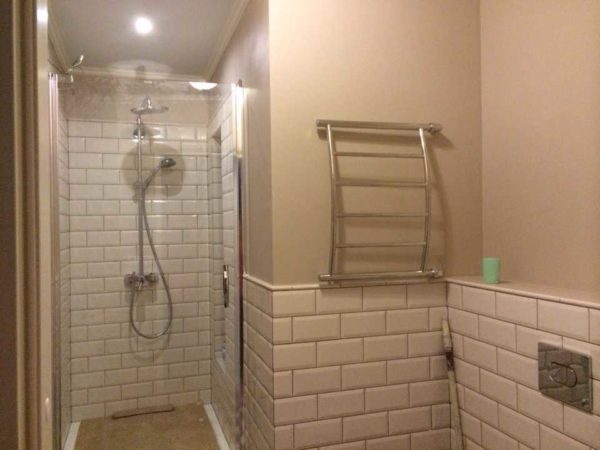

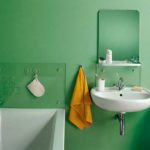

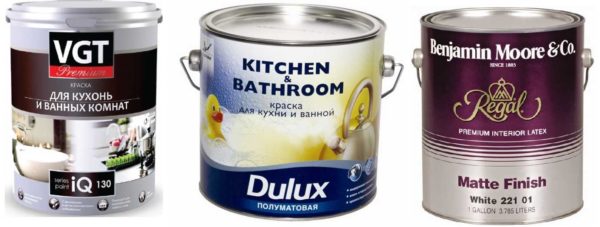
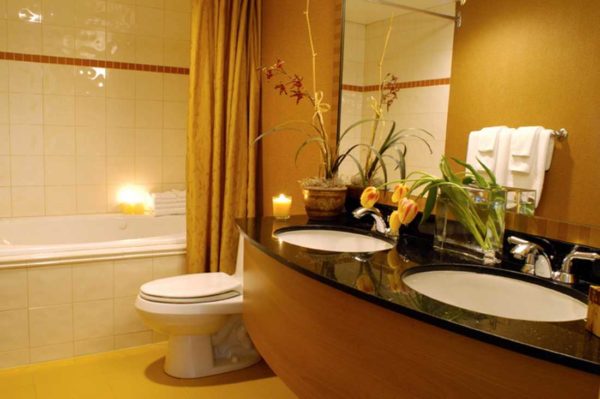

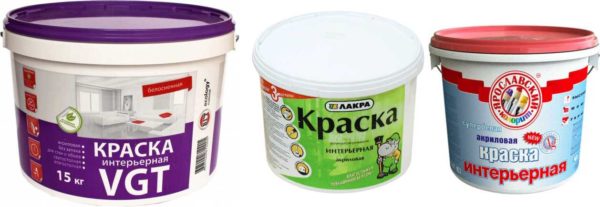
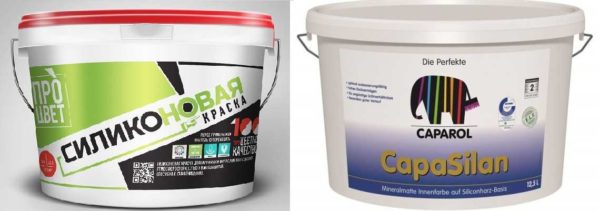
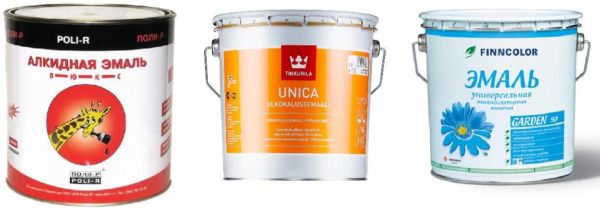
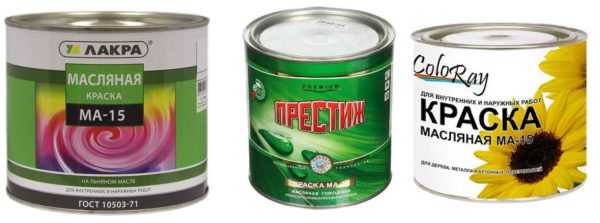
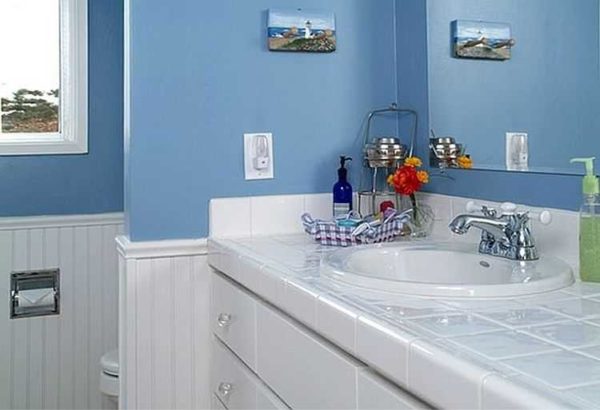
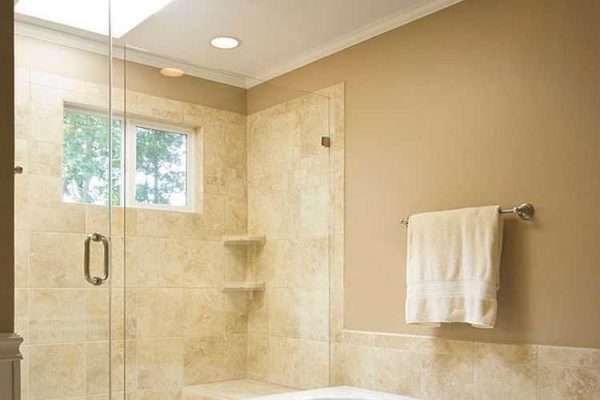
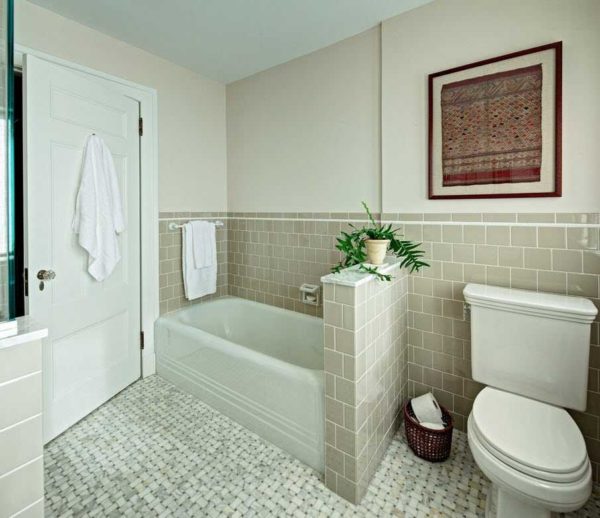
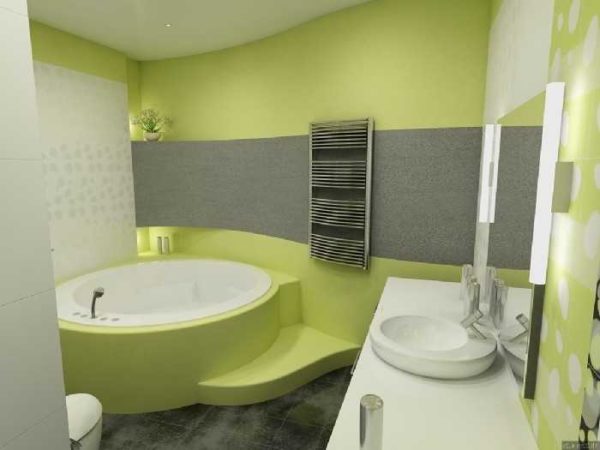
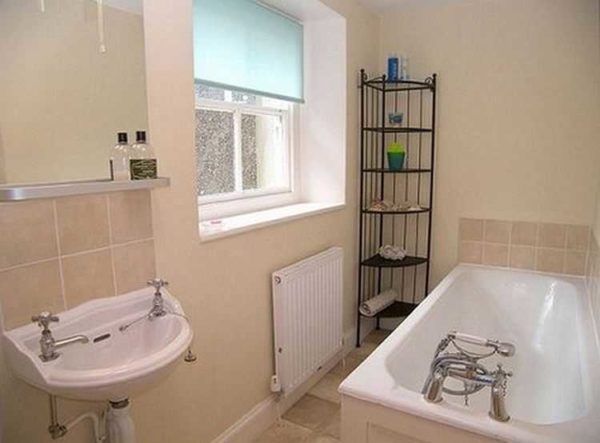
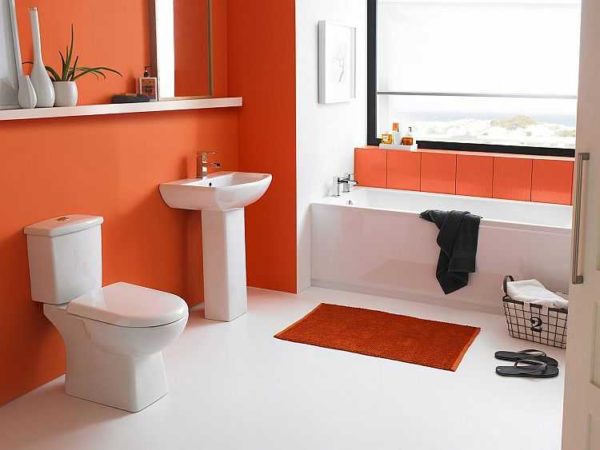
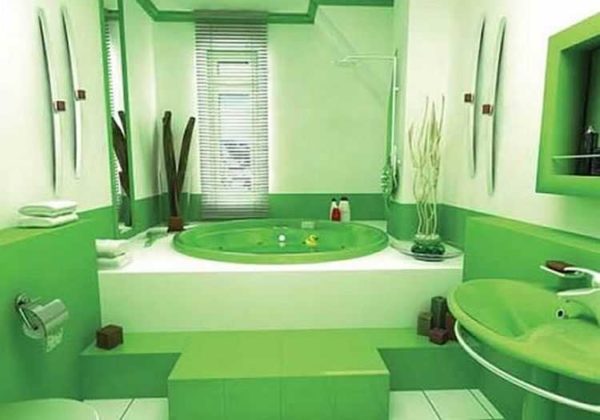
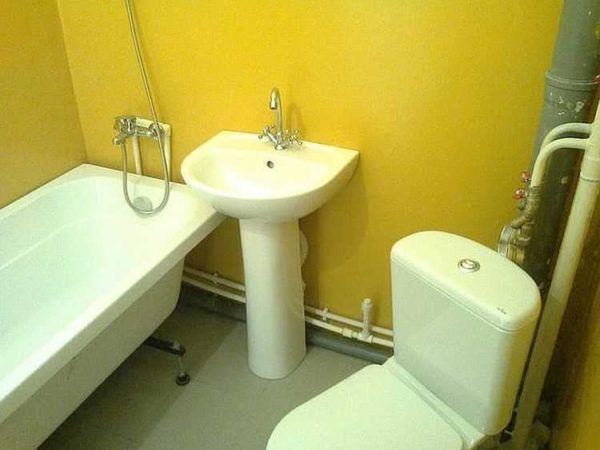
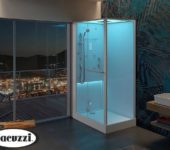
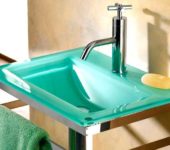
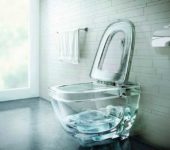
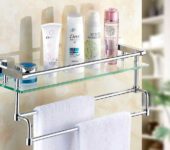






I did a bath renovation a year ago. Dulux paint came up with a bang! It fits perfectly, and after painting it looks decent and washes perfectly!